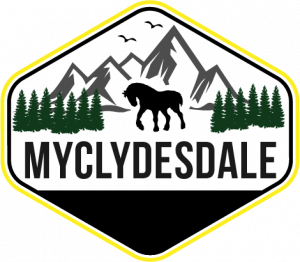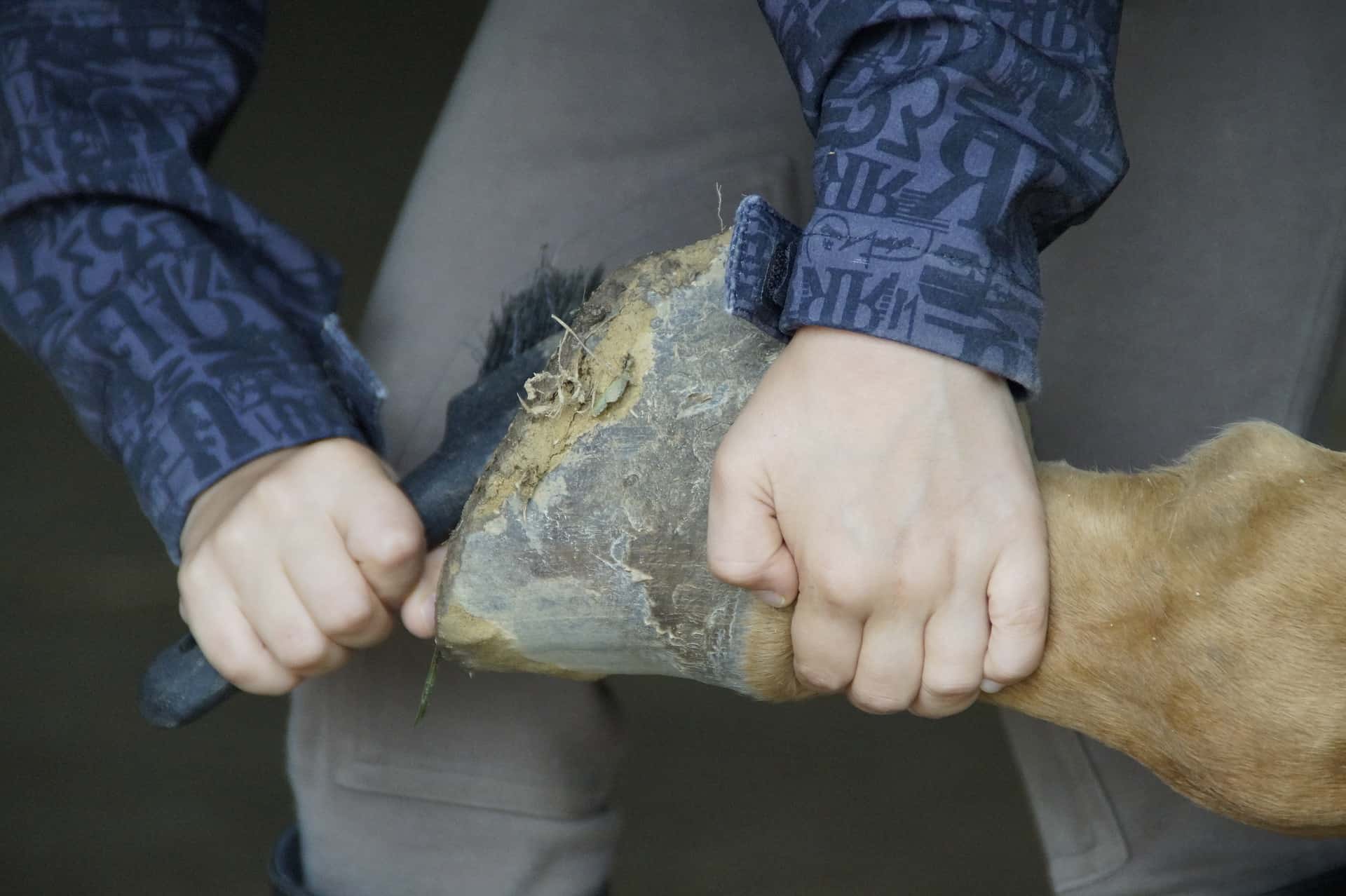A huge horse bred to perform difficult jobs like plowing and other farm work is referred to as a draft horse, also known as a carthorse or heavy horse. A Clydesdale horse is the Scottish equivalent of that breed and one of the most popular in the equestrian world. It was derived from Clydesdale in the 18th century, as you may infer from its name. Nowadays many are invested in keeping a Clydesdale horse for loads of reasons but it is important to know the costs behind it.
Clydesdale Horse Cost
An average Clydesdale horse can cost between $1,000 and $5,000, according to the Clydesdale Breeders of the USA. A top-notch stallion with honors or awards may bring at least $20,000. Of course, several elements, like the horses’ age, pedigree, and level of training, influence their initial cost. The cost of a Clydesdale horse can change depending on its genes, training, and age.
can change depending on its genes, training, and age.
As like any other horse breeds the cost of a horse varies dramatically and also much for the cost of keeping and maintaining a well-bred and healthy horse.
Let’s see how the factors mentioned above affect the prices.
- The bloodlines significantly influence the price of a horse. A Clydesdale with a successful pedigree will frequently fetch a higher price since their bloodlines are highly coveted. People frequently pay particular attention to Clydesdale bloodlines to create the highest caliber horses. Before buying a horse, it is normal practice for buyers to look into the horse’s bloodline to understand the animal’s history better.
- The price you spend for a Clydesdale will be significantly influenced by training. Although many Clydesdales are trained for driving, riding Clydesdales is also growing in popularity. Horse training involves a significant amount of effort and commitment. A skilled trainer should work with the horse several times weekly to keep it in peak showing condition. A young horse with limited training will fetch less money than a properly trained seven-year-old Clydesdale. While a properly trained horse would cost $5,000 or more, a Clydesdale with little to no training may frequently cost less than $3,000.
- Clydesdales have distinguishing features of long, well-arched necks, open foreheads, bright eyes, big hooves, feathering, and well-muscled bodies. A Clydesdale with good conformation will sell for higher money, just like other horses. The most common hue of a Clydesdale is bay. Additionally, they can be black, gray, or roan. The Budweiser Clydesdales must be bay, with four white stockings, a white blaze, and no other white markings. This traditional lookout may be sought after by some, which could increase the price of horses. The cost will also be influenced by age. A Clydesdale’s prime years are between the ages of 5 and 14. Older horses will be sold for less money than younger horses.
Clydesdale Transportation Cost

It’s not just keeping a Clydesdale it’s also Transportation of them. It is one Clydesdale horse ownership expense that is commonly disregarded. Horse trailers and trucks are required to move your horse safely, whether your objective is to and from favored riding locations, horse shows, the equine vet, or another location.
A horse that may weigh up to 3,000 pounds and stand up to 10 feet tall will require your truck to have a hauling capability for them. This kind of towing capacity can easily cost $50,000 or more for new cars. One of the five largest horse species in the world, the Clydesdale, must fit comfortably within the trailer you choose. You might be lucky if you can find a used horse transporter for at least $10,000. A new bespoke trailer can cost more than $100,000.
Long-term Costs Associated With Keeping a Clydesdale Horse
- Healthcare
Keeping a Clydesdale horse healthy year-round, you must take good care of it. This implies that you are responsible for its yearly healthcare costs. According to a national survey of horse owners, the average annual expense of dental treatment ranges from $249 to $500+. Floating teeth might cost $50 to $150. Costs for urgent dental care range from $100 to $1,000. A horse must frequently pass the Coggins test before being transported to a show or another location. Each test costs between $25 and $50.
Emergency appointments can cost anywhere between $50 and $100, while routine veterinary checks range from $25 to $75. Lifesavers Wild Horse Rescue says a healthy horse’s annual veterinary costs, are often insignificant. While monthly dewormings run about $13, individual immunizations start at $75 to $150. Veterinary mild emergency procedures cost between $200 and $500.
Shoeing horses when needed can add up and can depend on how much your horse does and what you intend to use your Clydesdale for. This can have different price tags.
- Nutritional needs
A Clydesdale horse must consume a lot of hay and food daily to stay strong and healthy. You should feed it depending on the task and how old it is. Adult stallions, for example, may consume up to 50 lbs. of hay and 10 lbs. of grains per day.
Notably, compared to other horses, this type of horse eats more food. A young Clydesdale typically requires a monthly cost of feeding of $150 to $175. Additionally, adult Clydesdales that put in a lot of effort require horse joint supplements to help heal damaged tissues and improve their health. Therefore keeping a Clydesdale horse can get extremely expensive.
- Bedding
For times spent in the stall, your horse will need a lot of comfy bedding. You may purchase a common choice by the bag or truckload is shavings. The cost of bedding may vary between $40 and $100. It really all depends on how often you have your horses in a stall.
Horse Tack Costs

Numerous different pieces of horse equipment are collectively referred to as tack. It will become more natural for you to refer to these things together rather than as individual pieces of equipment as you gain more experience riding horses. Some of the most popular items of horse tack gear include saddle, saddle blanket, cinch, breastplate, stirrups, reins, bridle, bit, hackamore, and martingale. Along with many other items, riding tack also includes blinkers, boots, nosebags, and chamfrons. While certain pieces of tack are used on every ride, others are only used occasionally.
The whole price varies on a few variables, including the riding discipline you choose and whether you buy new or used. Let’s break down the associated costs.
- Saddle: The price range for a saddle, stirrups, saddle pad, and girth is between $250 and over $8,000.
- Bridle: The cost of a bridle, reins, and bit can be between $70 and $1,000.
- Accessories: Some riding disciplines, such as western or jumping, call for additional equestrian equipment, such as a riding crop, martingale, or breastplate. Add between $125 and $250 if you require these things. Your whole expense will now range from $450 to $9,500.
Conclusion
As the Clydesdale horse is one of the largest breeds they are going to have the most expensive, that’s just sense. They are magnificent horses that can do a tremendous amount of work and are capable of such great companions. Although potential owners also need to be aware of what is involved when owning such mighty animals and the cost of upkeep for these is on the highest spectrum so just research and grab a few other insights from this other article.
Recent Posts
Mastering English Dressage: Tips and Techniques Complete Guide 101
Introduction English dressage is an equestrian sport that involves precise movements and commands between a dressage horse and its rider. It is a graceful, beautiful art form that requires skill...
Introduction Are you looking to learn more about western dressage, the art of horse dressage? If so, you've come to the right place. In the previous blog we looked at Western vs English Dressage,...

